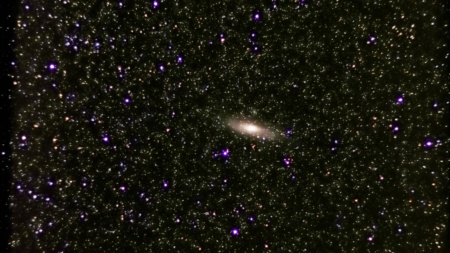
You don’t have to be an expert with observatory equipment to get gorgeous pictures of the night sky. ITC editors will show you how to shoot the night sky at home using an inexpensive camera, a fast lens, a tripod and software for combining photos.

Equipment and conditions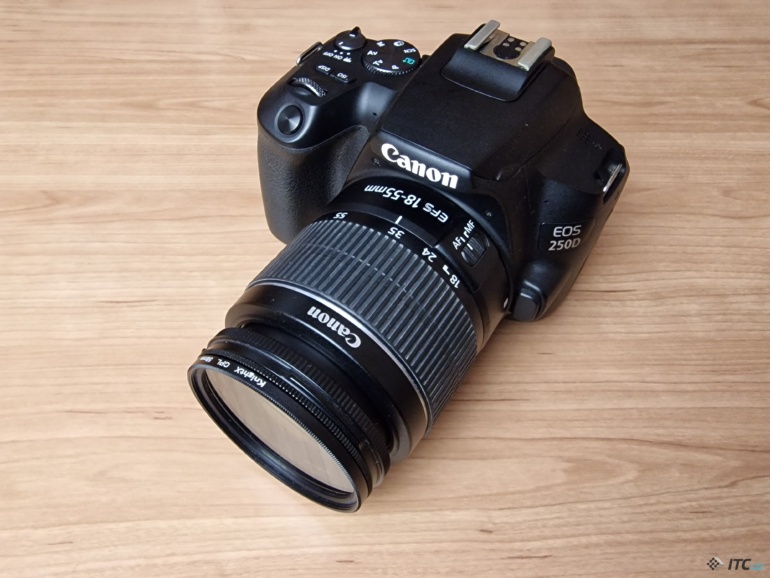
What is needed to make a high-quality astrophoto:
- Entry-level SLR camera or higher;
- High-power lens, optimal portrait 50 mm;
- A tripod for fixing the camera;
- Computer or laptop with software;
You will also have to hope for good weather. You can do this business only in a cloudless, clear sky and the absence of fog. This material used a Canon 250D camera and a 50mm light portrait lens.
Camera settings
For astrophotography, you must use a tripod, because with long shutter speeds, the shooting device must be stationary. In other conditions, the picture will smear. This is all due to the rotation of the Earth around the axis.
It is necessary to choose such a shooting location so that street lighting does not interfere. Ideally, as far as possible from light sources. All astrophotography should be done in manual mode (on the camera, mode M, on smartphones it is often marked as “Pro” mode).
All camera parameters such as shutter speed, aperture, ISO will be available manually. It is important to switch the focusing mode to manual on the lens. Aim at the stars, use the “zoom in” key on the camera and turn the focusing ring on the lens, changing the focus until the star becomes the smallest round point.
The aperture value should be as small as possible. For this purpose, the F1.8 portrait lens was used. A whale lens will also work, but the difference is immediately noticeable.
Some examples:
Canon 250D+F1.8 50mm, ISO 12800, shutter speed 6 s.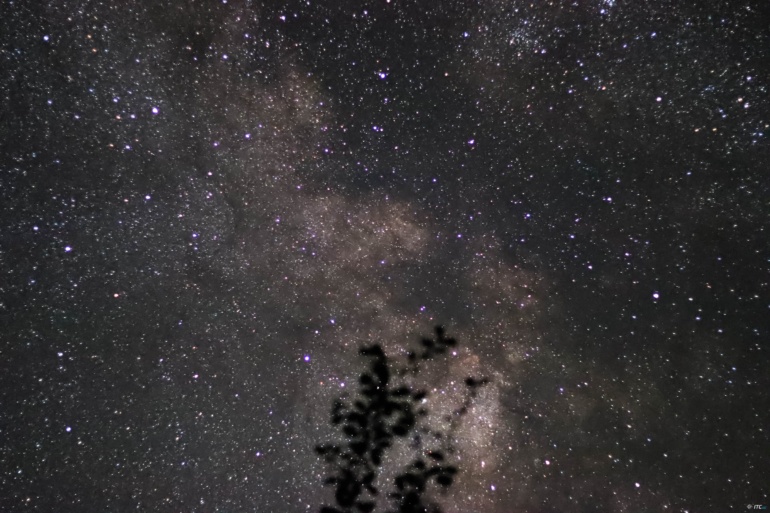
Canon 250D+Kit lens ISO 12800, shutter speed 15 s.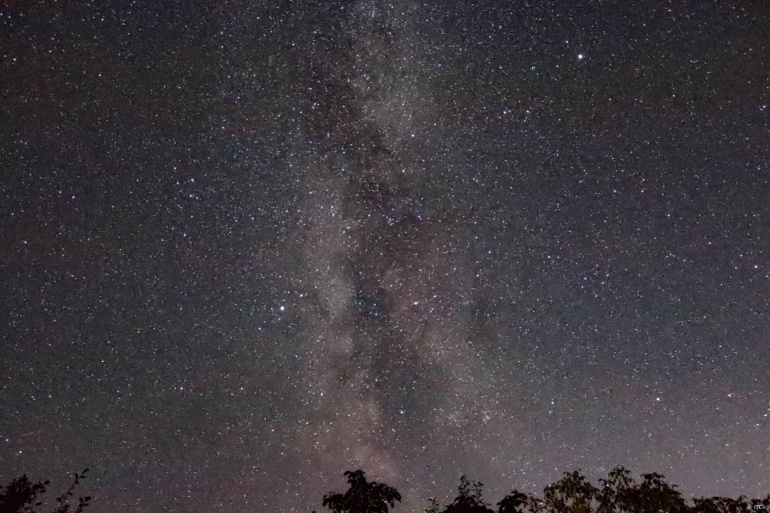
Shooting parameters
A long exposure allows you to catch as much light as possible. If the value is too large, the image will be blurred.
Andromeda galaxy. Comparison of shutter speeds of 0.8, 2.5, 8, 15, 30 s. ISO3200
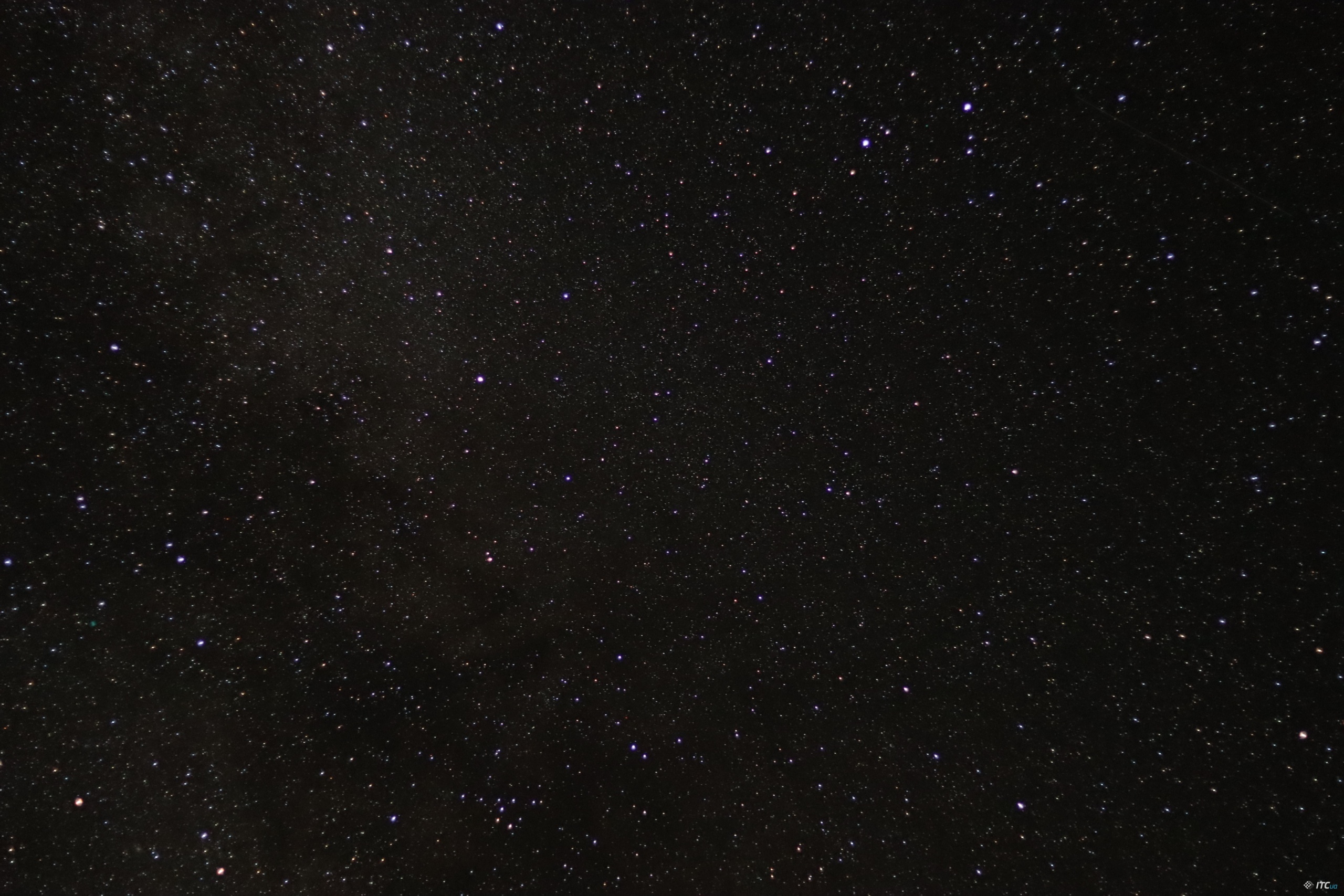

At long shutter speeds, the stars “float” in the night sky. The optimal exposure value in this case was 6s.
ISO sensitivity is also very important. On the Galaxy S22U, ISO 3200 is the maximum available, but camera-like noise at ISO 25600.
Andromeda Galaxy Comparison of different ISO values. Duration 6 s.
At ISO 6400, the image shows a lot of noise. The optimal shutter speed values for the F1.8 50 mm lens are 4-8s, the optimal ISO value is up to 3200-6400.
You can take photos in both JPG and RAW format. Photos taken in RAW format are better post-processed in programs such as Lightroom, etc.
Photos are taken in RAW format and processed in Adobe Lightroom.
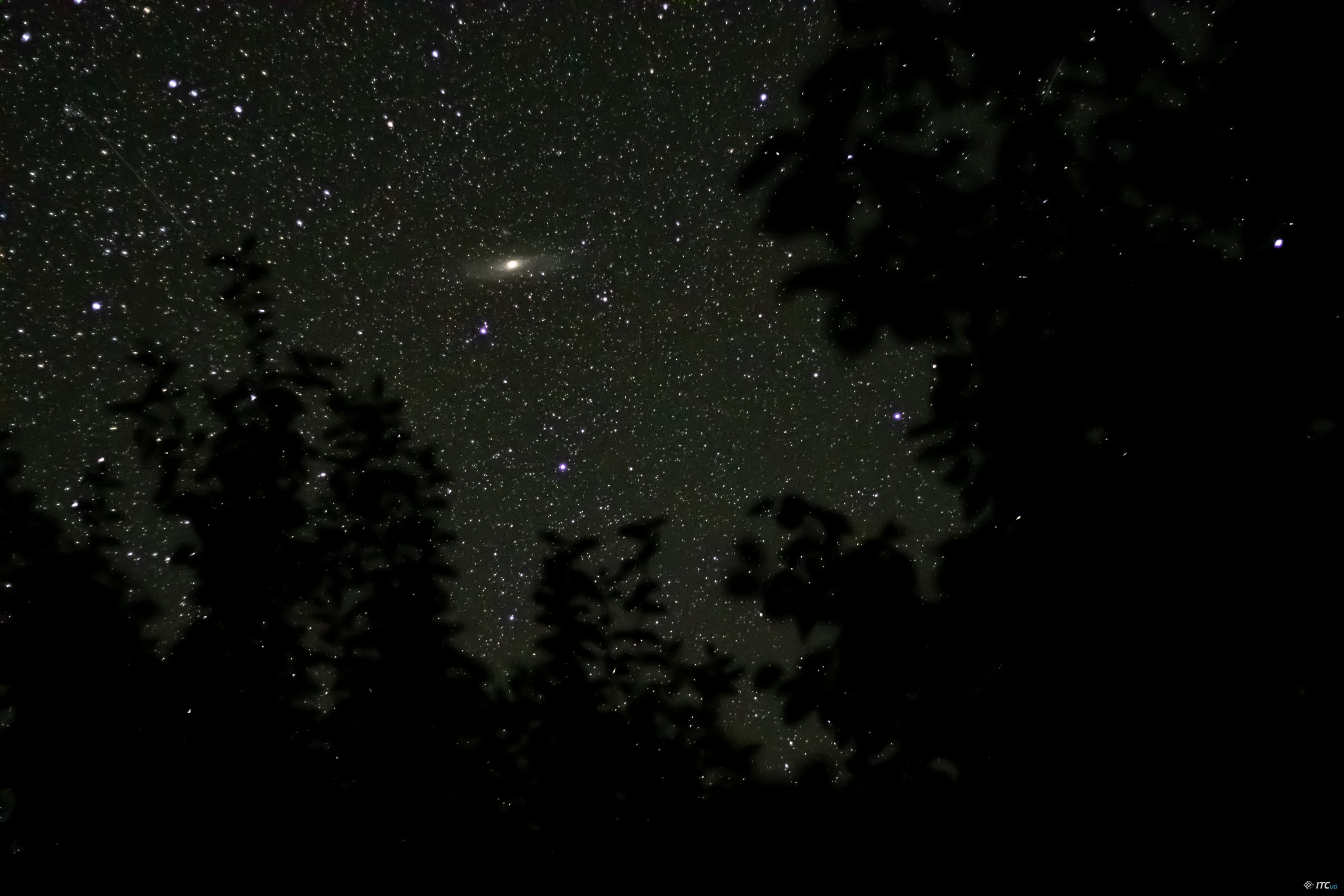

Andromeda Galaxy. Shutter speed 8s, ISO 3200
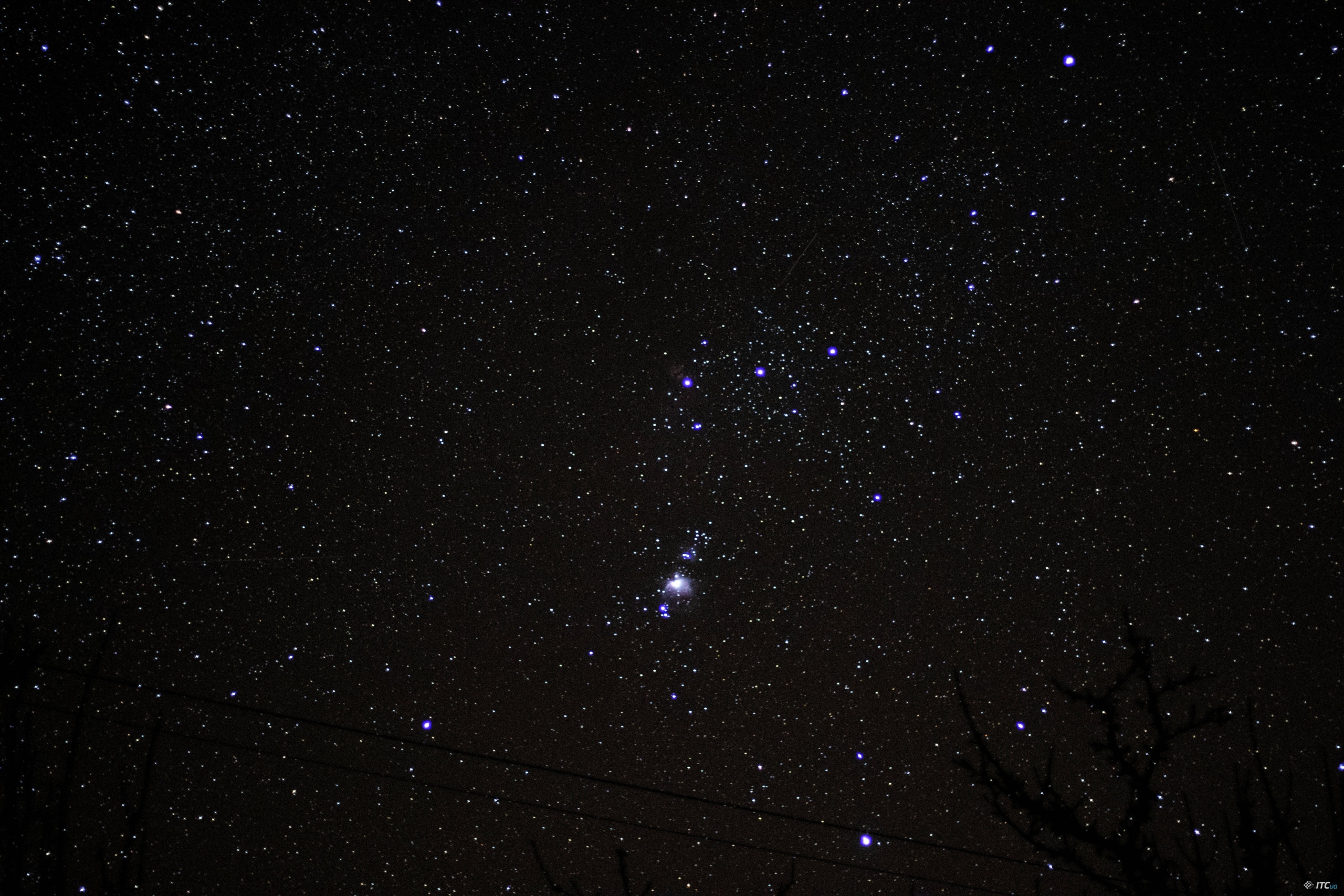
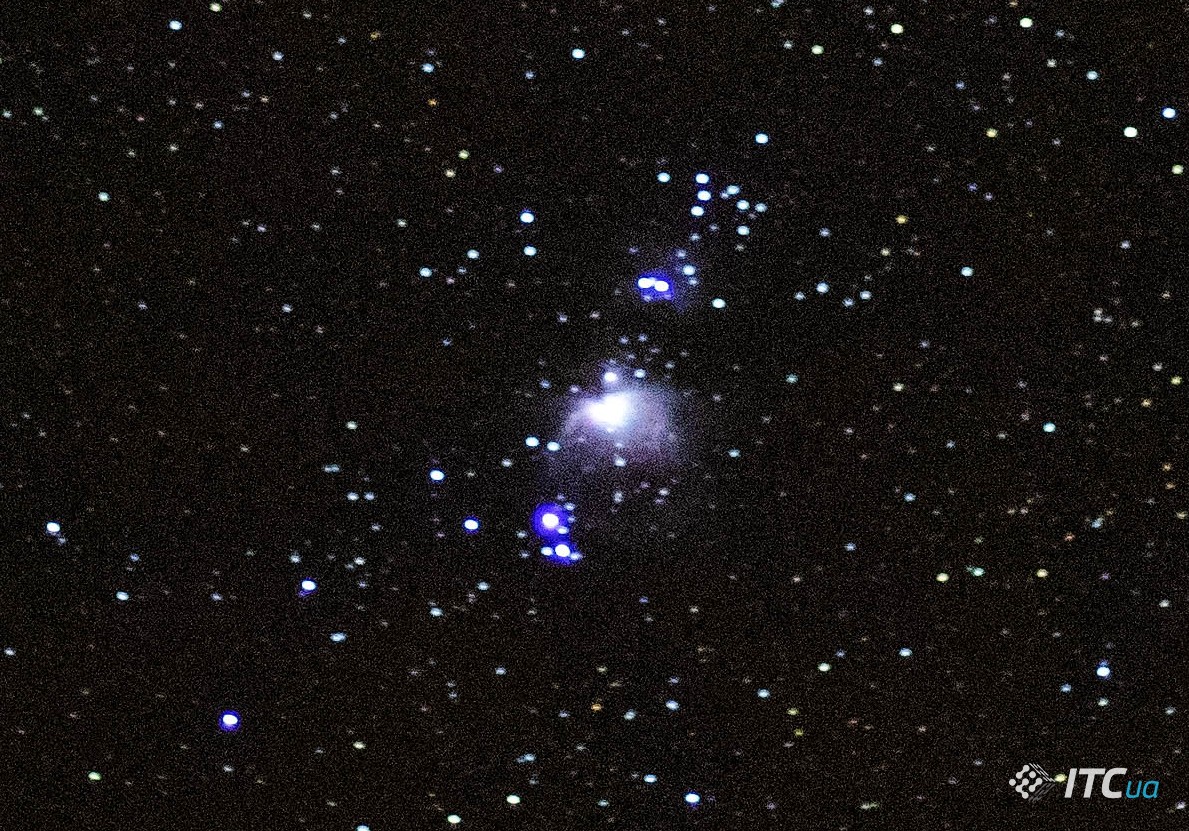
The Orion Nebula. Shutter speed 8s, ISO 3200
Is it possible to take astrophotos on a smartphone?
Even a modern smartphone is suitable for shooting night landscapes, but with the use of a camera, the image quality will be many times better.
When comparing the capabilities of the budget camera Canon 250D and the modern flagship Galaxy S22 Ultra, astrophotography was done on both devices:
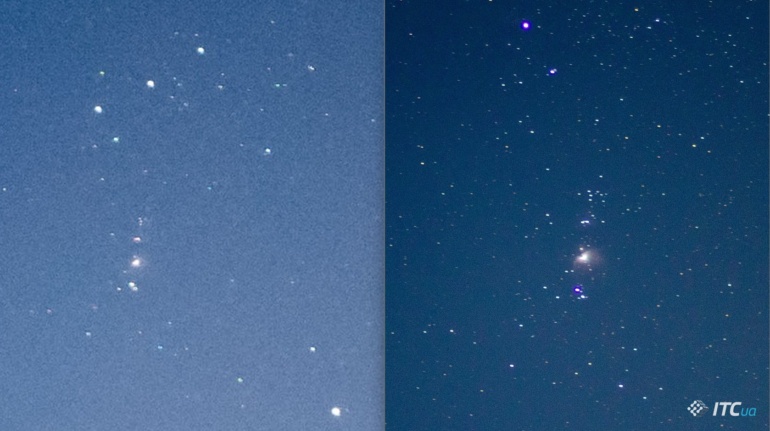
The Orion Nebula. Samsung Galaxy S22 Ultra on the left, Canon 250D+ lens F1.8 50mm on the right. Exposure time is 8s for both. Photo without any editing.
To get such a result, about 20 photos were taken on a smartphone with different parameters and the best of them was selected. It was enough to take 3-4 photos on the camera to get such a result. The details of the Orion nebula are practically absent from the smartphone.
One gets the impression that even in manual mode AI algorithms “poke their nose” into the photo. Artificial intelligence is the basis of modern mobile photography. The progress of mobile phone cameras is minor, but the processor does a colossal job. The smartphone processes images on the fly like a professional in Photoshop. Nice, but that’s only because of the processor.
AI still does not know how to shoot the night sky qualitatively. If there is a desire to try to take astronomical photos of the phone, it is necessary to turn off any automatic settings, as much as the manufacturer allows. We choose a camera as a priority for astrophoto.
Shooting objects of the solar system through a telescope
With the help of an amateur telescope, you can observe most of the objects of the solar system. Some of them are difficult to capture in a photo. This was easier to do using a special adapter for SLR cameras. It is quite possible to take a photo of the Moon, Jupiter, Saturn, Mars with a telescope with x75+ magnification.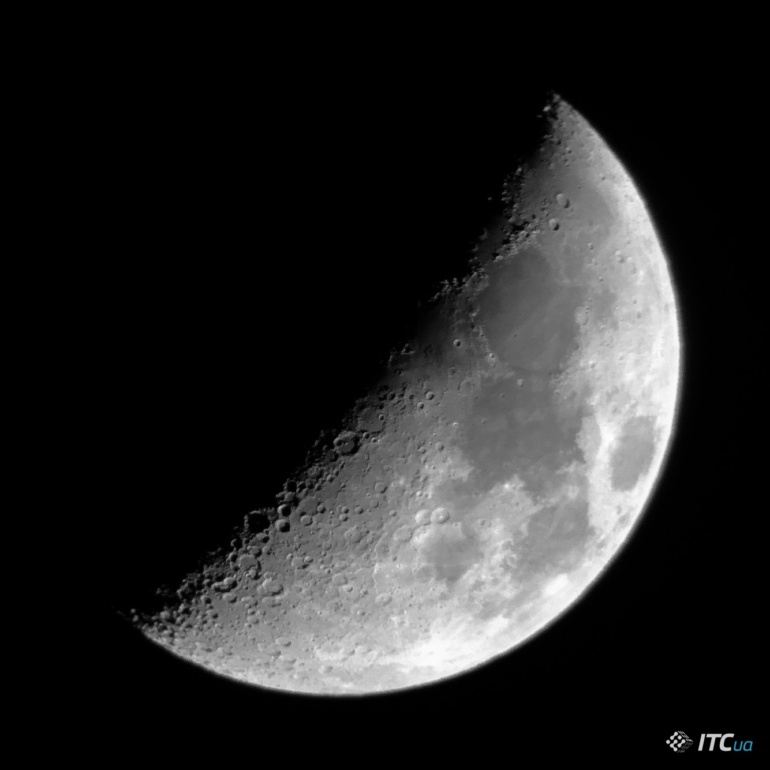
Photo of the moon through a telescope on an Apple iPhone 6, 75x
Shooting Deep Sky objects.
Deep Sky objects (deep space objects) are objects located outside the Solar System. These can be star clusters (Pleiades), nebulae (Orion), galaxies (Andromeda, Triangle, etc.).
For the convenience of searching for Deep Sky objects, you can use the free Stellarium program, it is available on PCs and smartphones. There’s also the handy Sky Safari app for smartphones, available on both Android and iOS. In these programs, you can choose the date and time. The selected parameters display objects that can be observed in the night sky.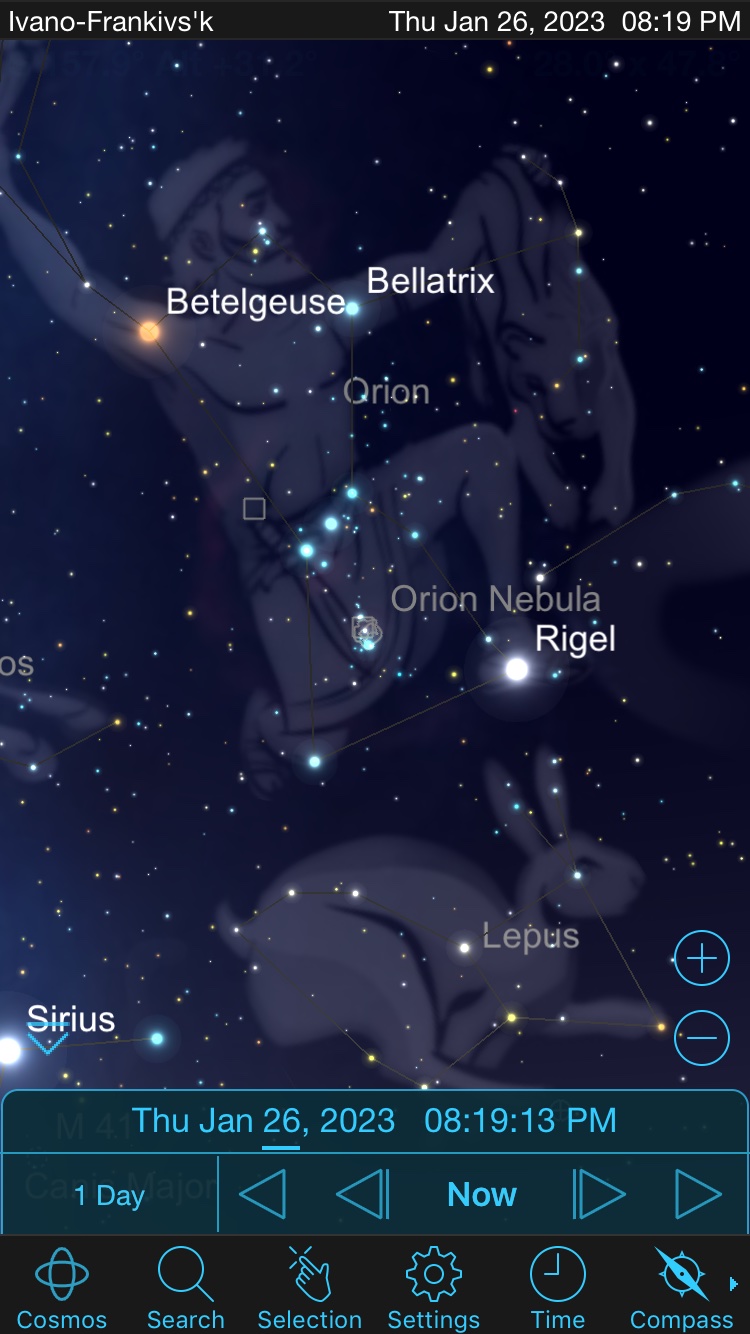
SkySafari application interface on a smartphone
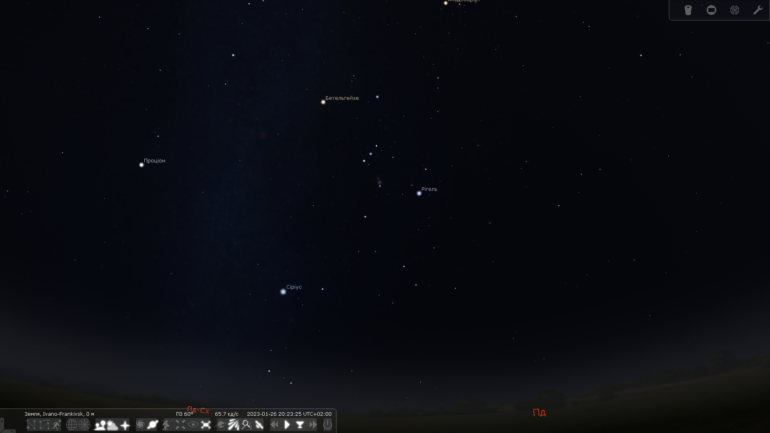
The interface of the Stellarium program on a computer (the display of objects of distant space can be turned on in the bottom panel)
Below we will explain in detail how to shoot Deep Sky objects on the Canon 250D camera.
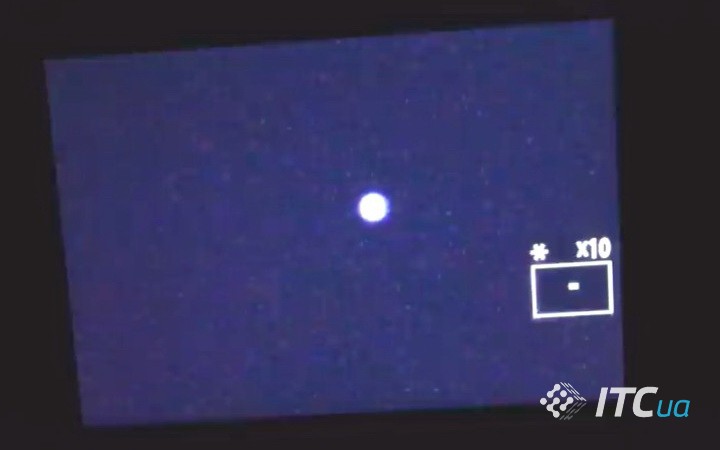

Star. Out of focus/out of focus
For shooting DeepSky objects, it is better to use a camera with a large matrix. In our case, there will be a budget crop Canon 250D. Owners of full-frame matrices will get a much better result.
Portrait lens F1.8 50 mm vs Kit
Andromeda Galaxy Canon 250D. On the left is the F1.8 50mm lens, on the right is the cat lens. The shooting parameters are the same, shutter speed 6s, ISO3200
The aperture on both lenses when shooting astrophotography should be as open as possible. After all, with the maximum open aperture, the most light falls on the camera matrix. Whale lens “black”. On it, the aperture was F5.6 at a focal length of 55 mm.
Professional processing of astrophotos
To improve the quality of photographs of space objects, the combination method is used. Taking a series of pictures of one of the objects followed by combination and post-processing is an effective way for amateurs and professionals. A series of images was taken for some DeepSky objects and combined in specialized software.
We used the DeepSkyStacker program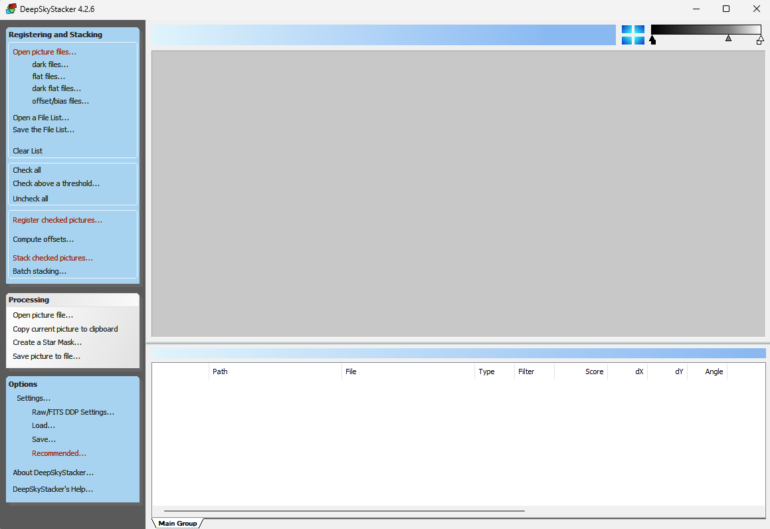
200 images were taken for the Andromeda galaxy, 100 images for the Orion nebula, 50 images of the Triangular galaxy, 50 images of the Bode and Cigar galaxies, 100 images of the Pleiades star cluster.
To improve the quality of the total images, a series of calibration images was taken to reduce digital noise:
Bias Frames. Photos with the slowest shutter speed (1/4000 on the camera), the ISO value is the same as when shooting a series of photos (ISO 1600).
Dark Frames. It is necessary to take at the same temperature of the external environment as a series of pictures of astroobjects. The ISO is the same as in Bias Frames – ISO 1600 and the shutter speed is the same as when shooting astro objects (6s in our case).
When shooting Bias and Dark shots, the lens must be closed, in this case with the lens cap.
After starting the program, select:
- Open picture file – select our astrophoto and click “Open”.
- Select the “Check All” menu item on the left
- Select Dark Files, mark all “Dark frames” and click “Open”.
- Select Offset/Bias Files, open all our Bias frames from the folder and click “Open”.
- We start the registration of the selected files “Register checked pictures”
- The settings should be left as standard and click Ok.
After processing all photos, the final photo will be saved in a folder with a series of DeepSky photos of the object in RAW format. The program can save images as JPG. To do this, select Copy Current Picture to Clipboard in the left column and copy, for example, Paint, and save the image as a JPG.
The final result
Below is a preview of the results of several hours of shooting and editing.
Andromeda Galaxy
About 200 pictures of the Andromeda galaxy were taken.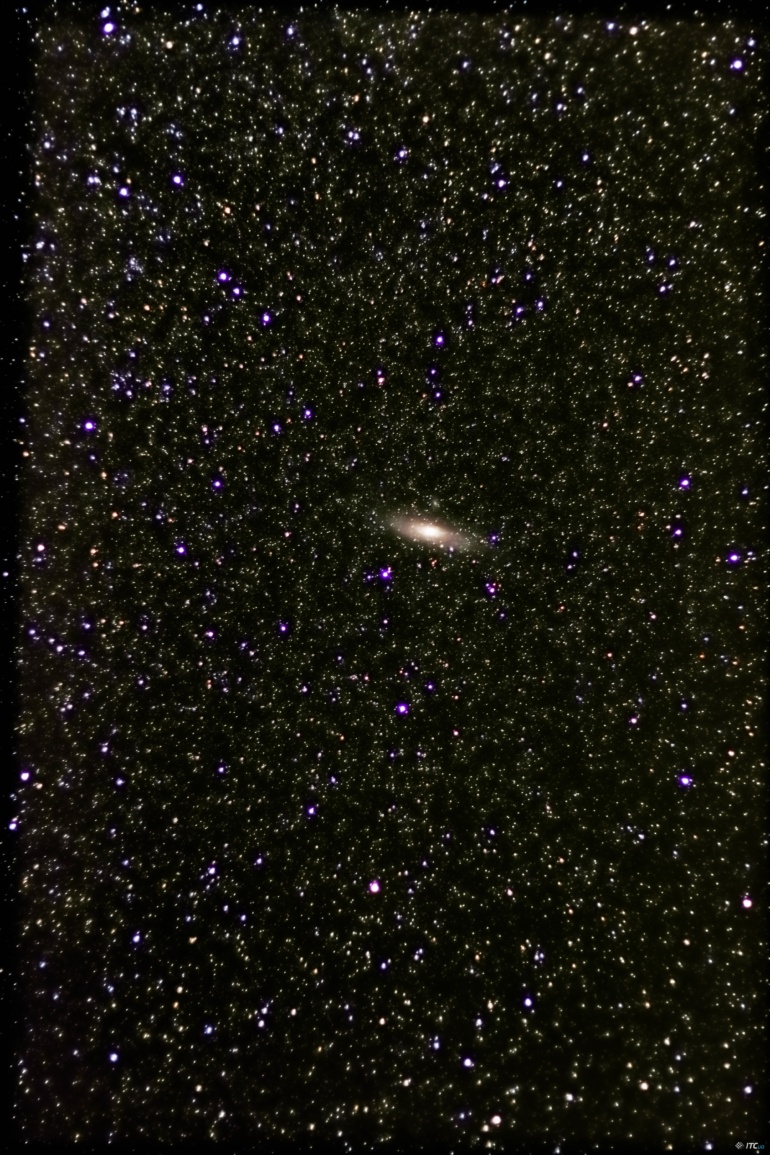
Andromeda Galaxy. Combined shot from 191 frames. Total duration 19 min. 28 p. Processed in LightRoom from RAW format.
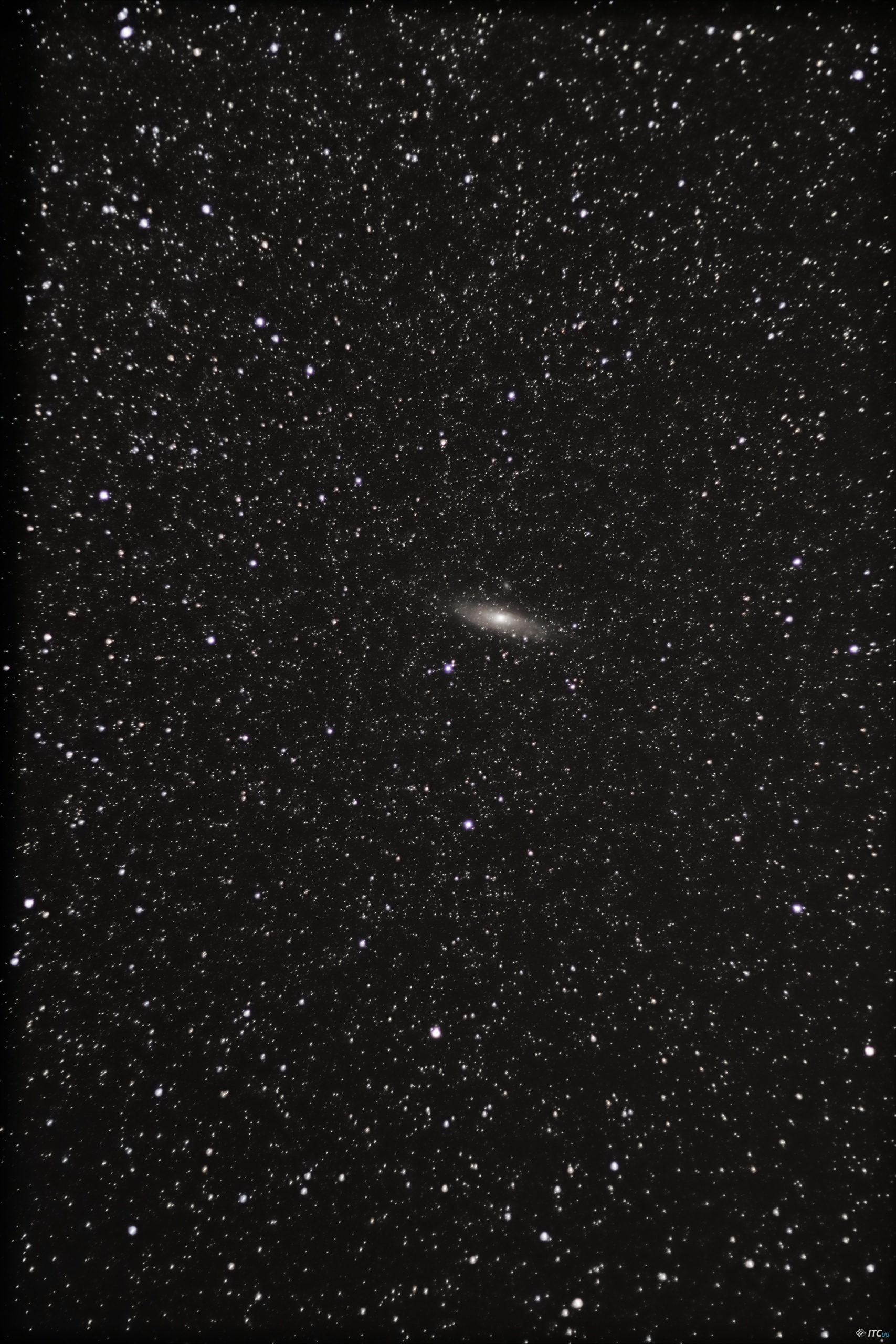
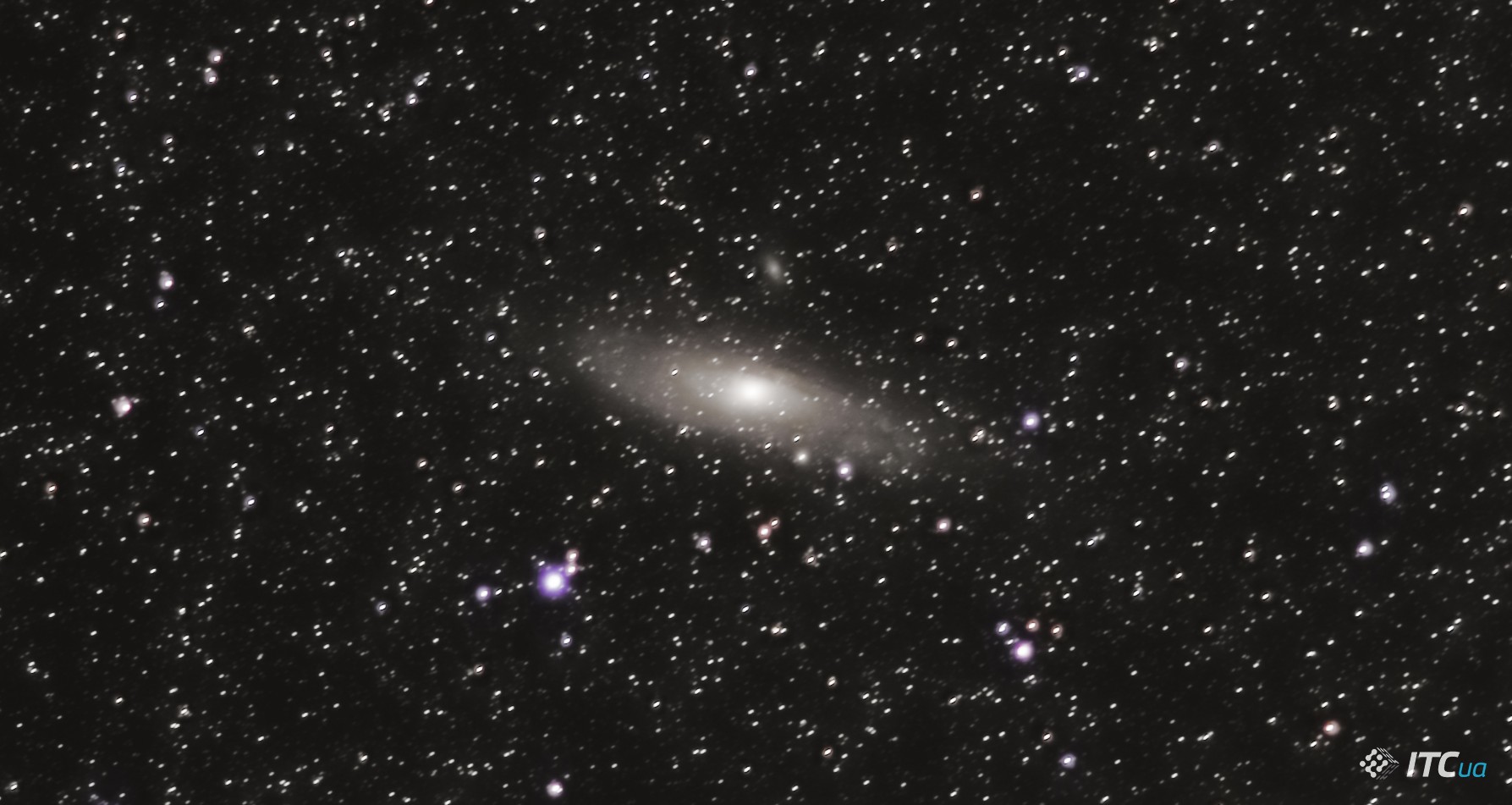
Result in JPG format from DeepSkyStacker.
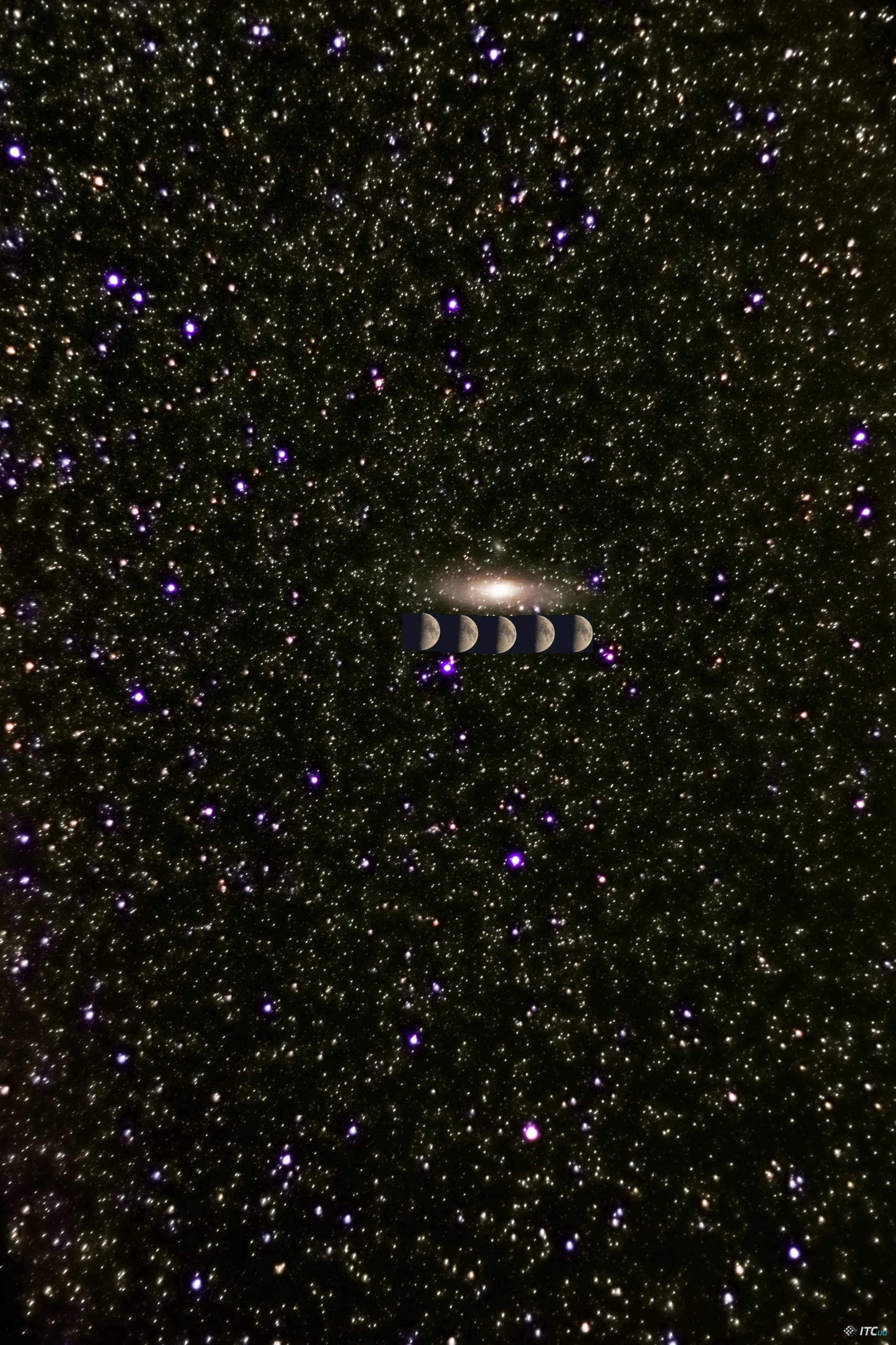
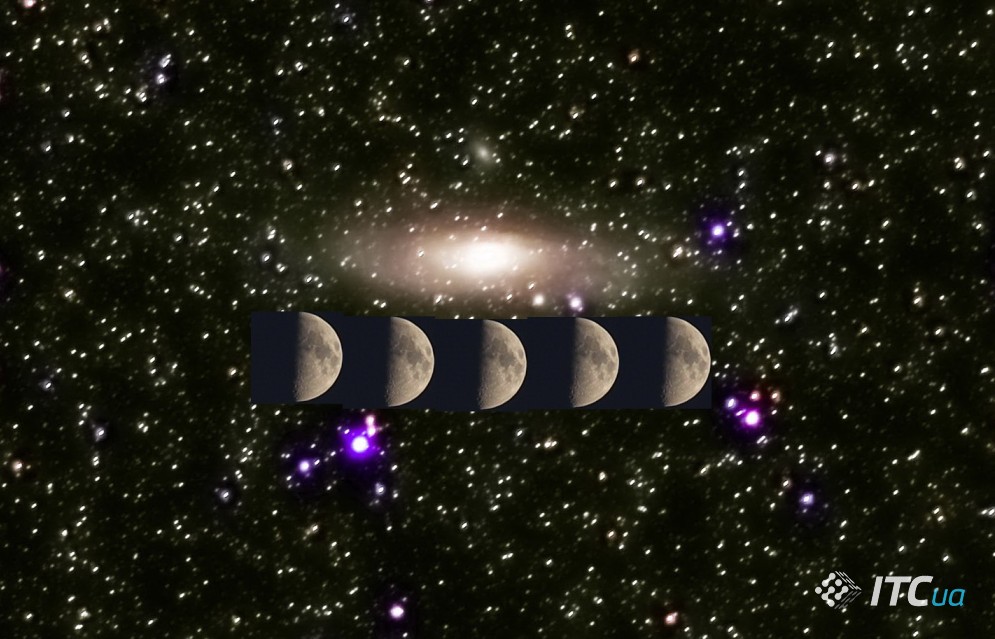
The size of Andromeda in the night sky in relation to the Moon
The Orion Nebula
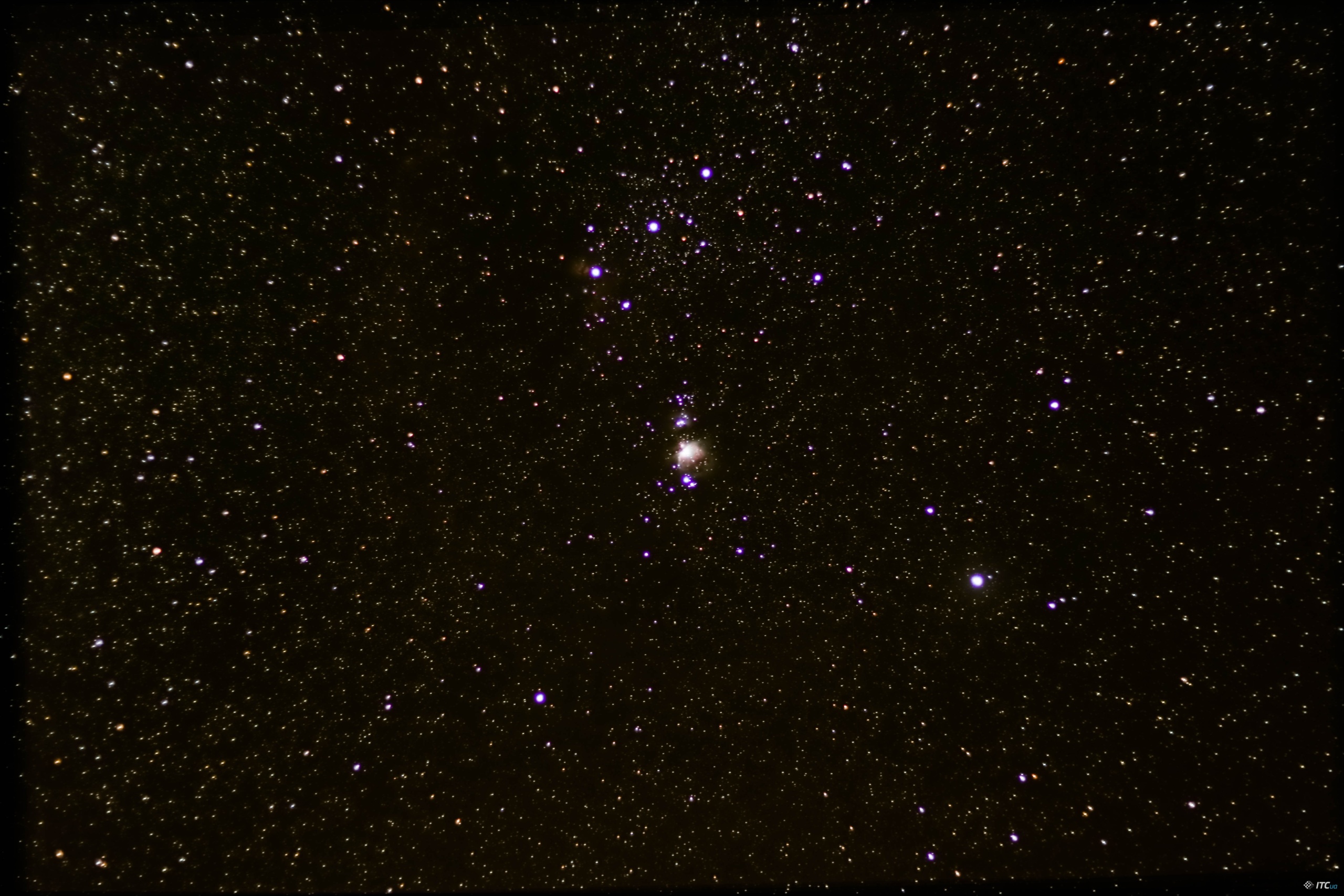

The Orion Nebula. Combination of 90 frames, total duration 9 min.
The Triangle Galaxy
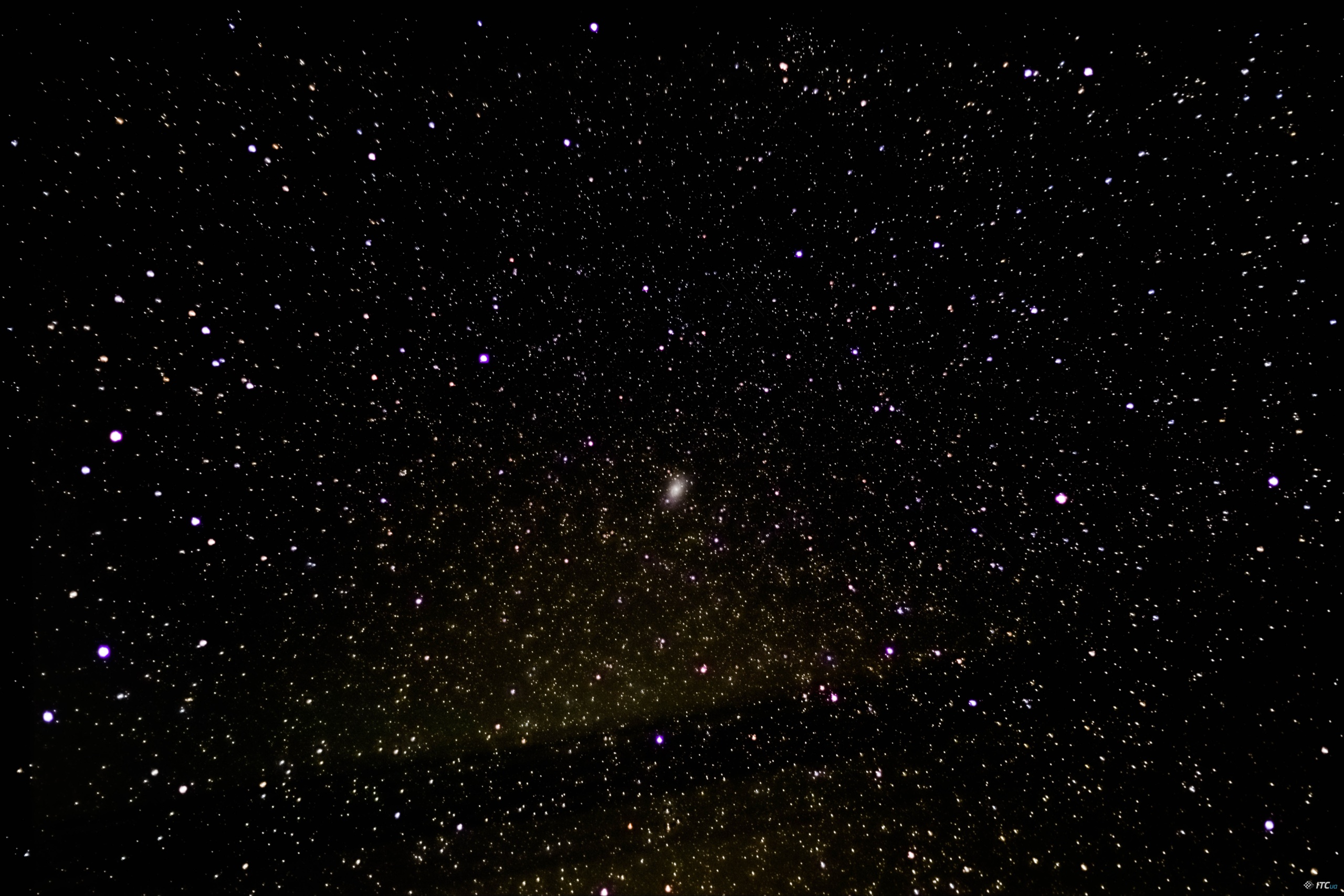
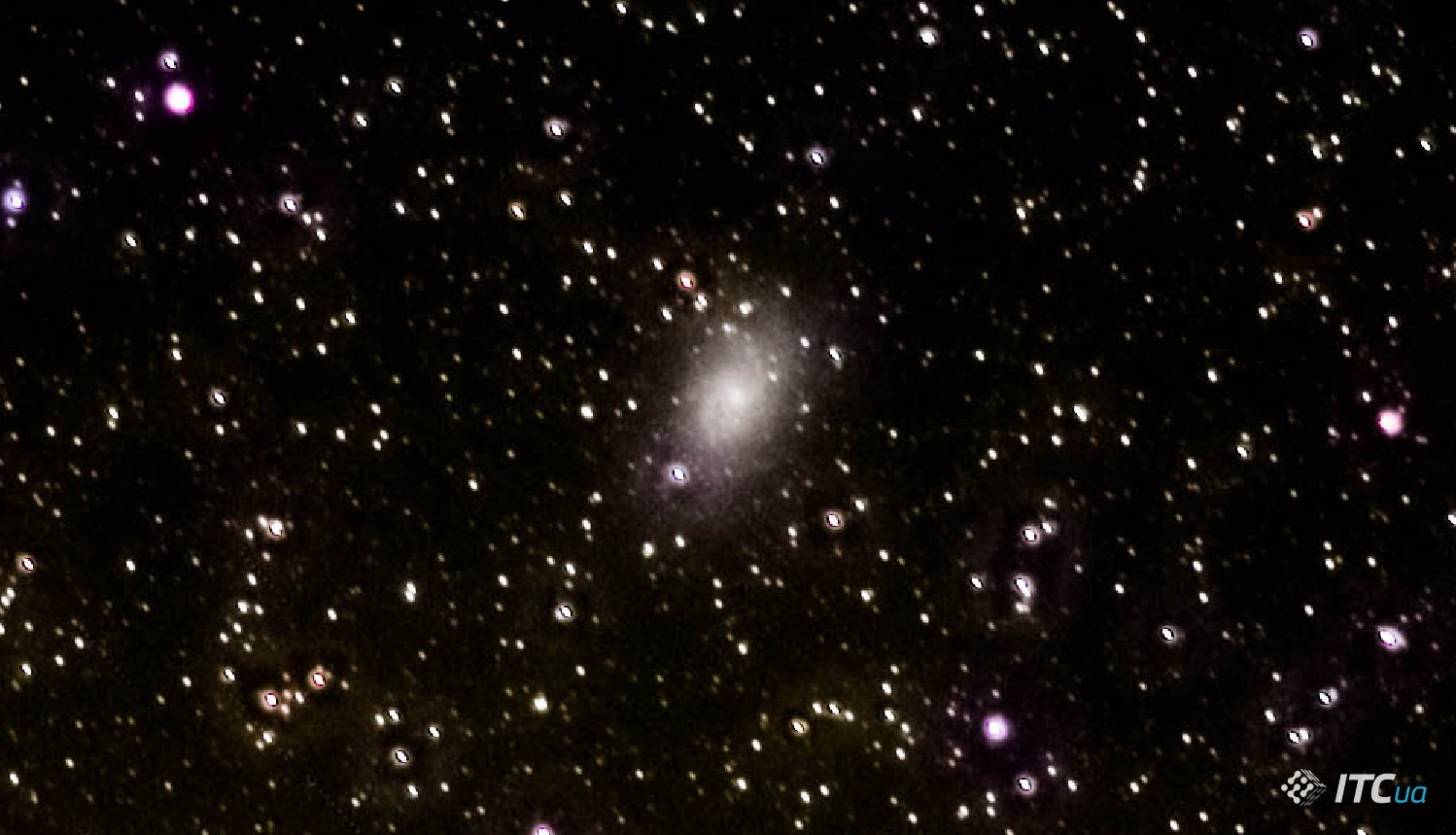
The Triangle Galaxy. Combination of 45 frames, total exposure time 4.5 min.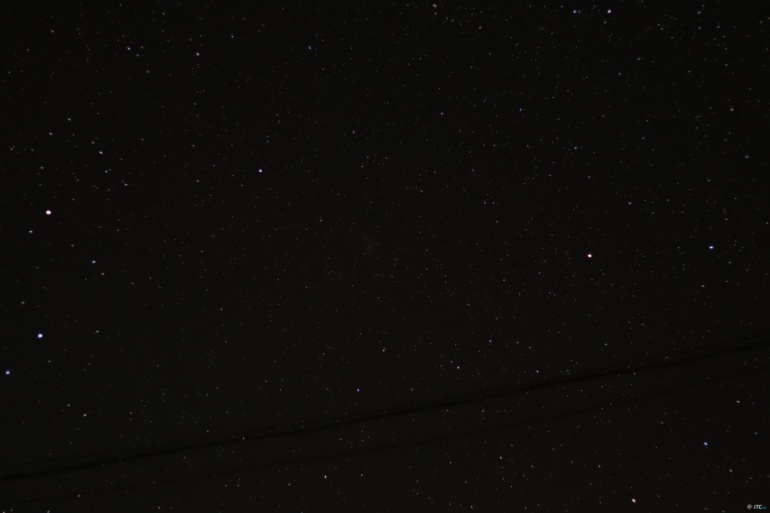
One shot. Parameters: ISO1600. 6s exposure
Bode and Cigar galaxies
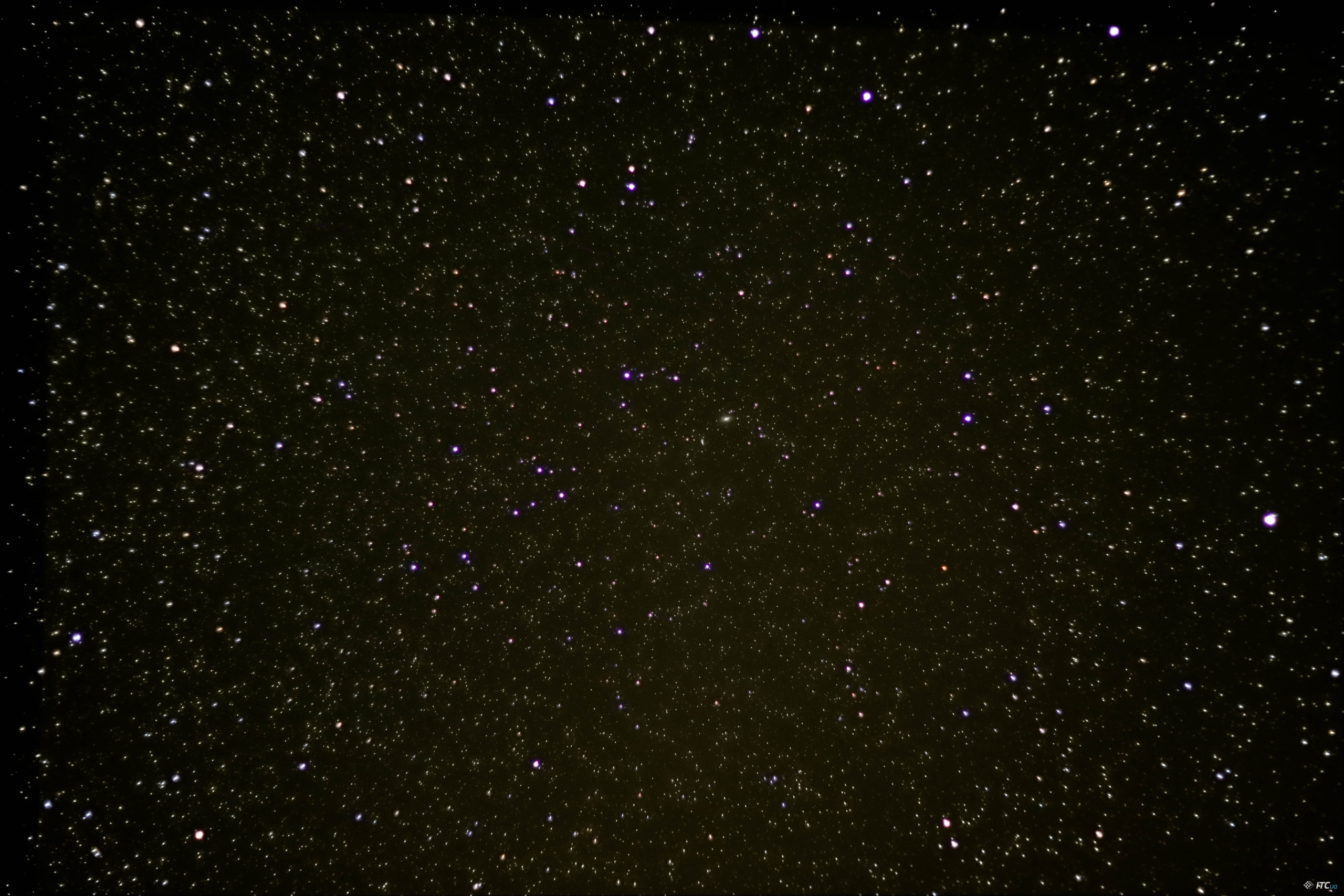
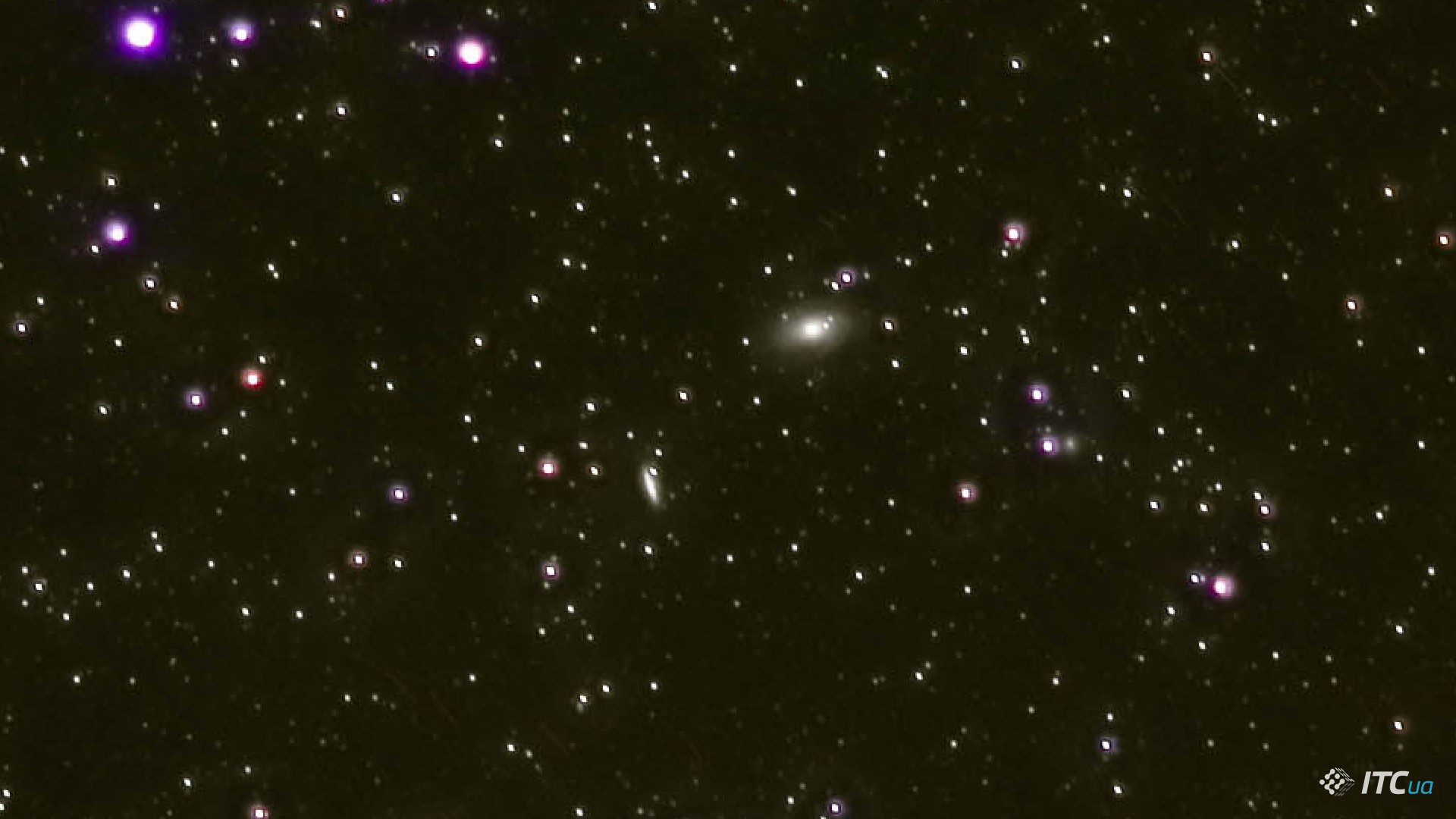
Bode and Cigar galaxies. A combination of 45 frames, a total duration of 5 minutes.
Pleiades
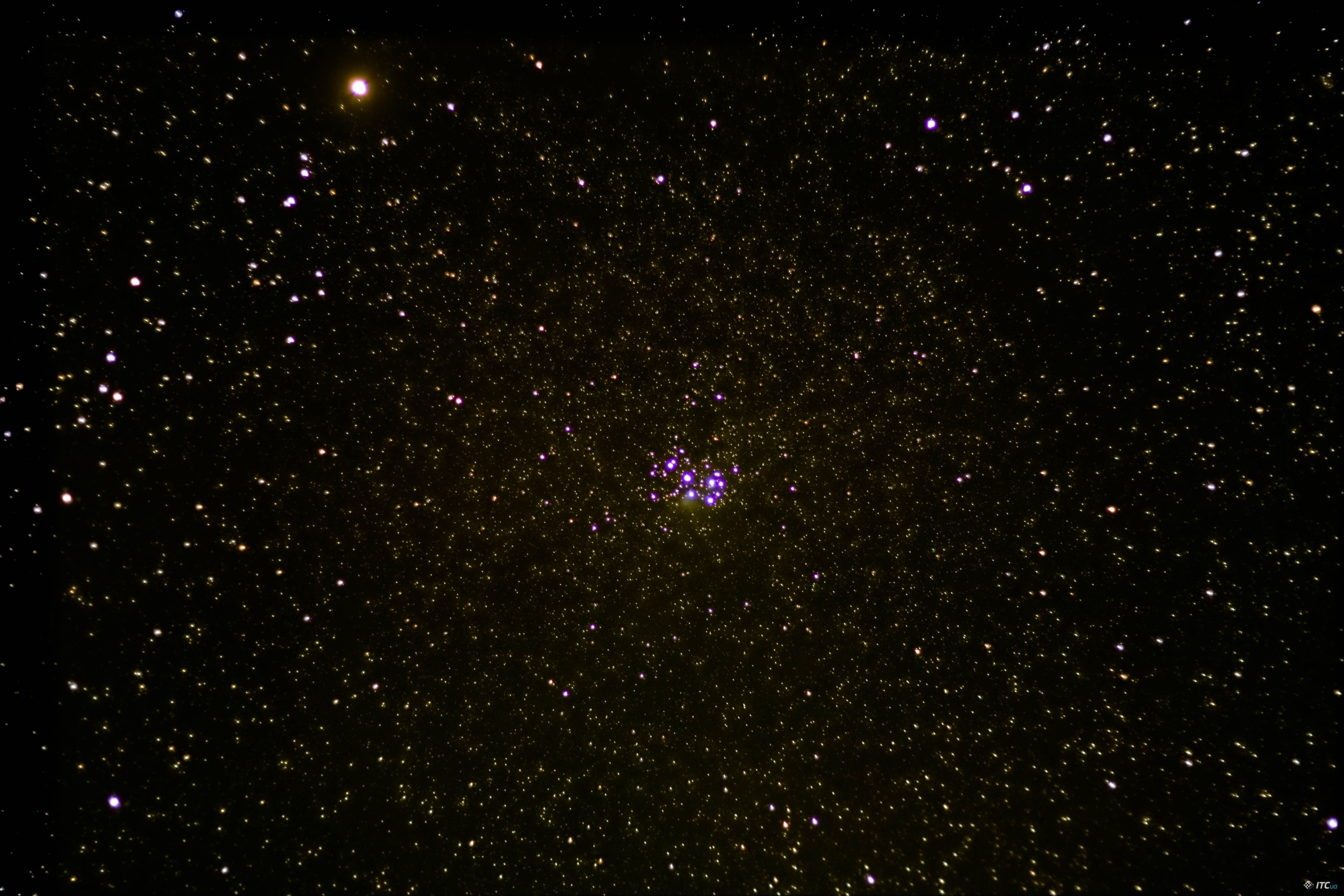
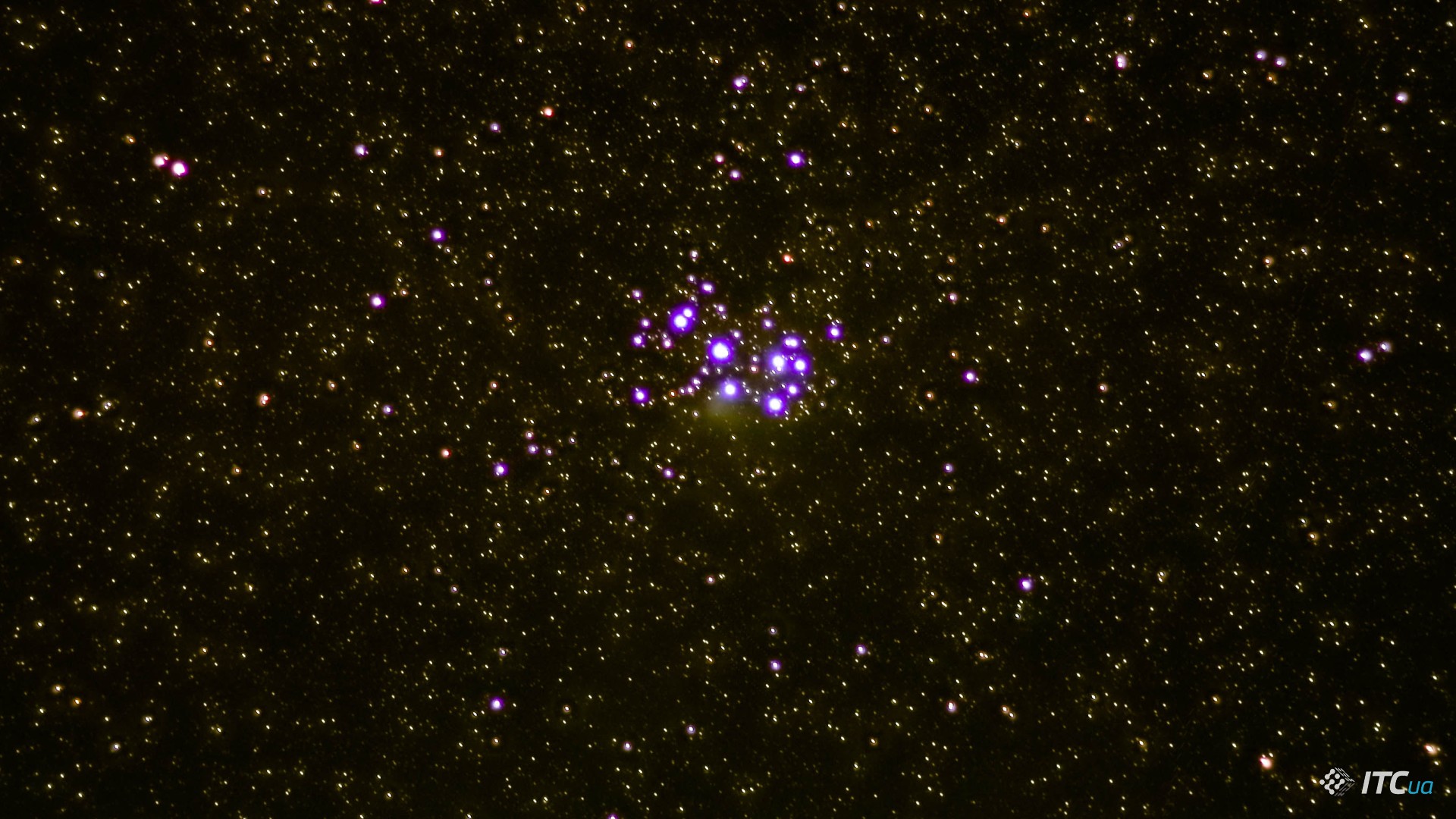
Pleiades star cluster. Combination of 90 frames, total duration 9 min.
Conclusions
With a simple camera, clear skies and a few hours of time, anyone can create beautiful images of the night sky. Astrophotography brings a person very close to the subject of the interesting science of astronomy. The opportunity to take part in such, albeit superficial, “exploration” of space is wonderful.
In the amateur photos you can see the most famous space objects. A camera with a high-speed lens will allow you to record what is inaccessible to human vision.
Image processing in specialized software allows you to bring the quality of astrophotos to a new level. Large telescopes, which also overlay hundreds or thousands of images, work on a similar principle.
Astrophotography is an educational and exciting activity that everyone who is interested in astronomy and has at least a simple SLR camera should try.
Pay attention to the material in which the ITC editors explain the basic principles of operation of radio and optical telescopes:
James Webb photos fake? We understand how infrared and radio telescopes work using simple examples




